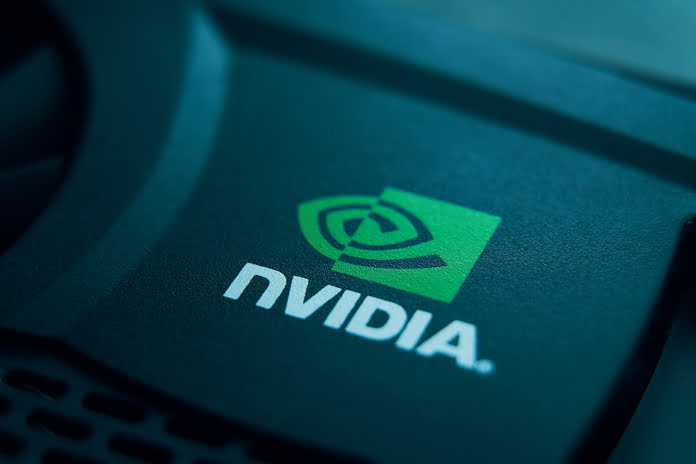NVIDIA Stock (NASDAQ:NVDA)
Investors shouldn’t get overly enthused about NVIDIA (NASDAQ:NVDA), even though it has recently revealed stronger operating trends, and its new breakthroughs in AI may offer a new source of growth.
Income Analysis
NVIDIA surpassed market forecasts on both the top and bottom lines when it released its Q4 and full fiscal year (FY) 2023 earnings yesterday. Although NVIDIA has a history of exceeding street predictions, this quarter’s revenue beat was less than in prior quarters due to the semiconductor industry’s continuing lackluster operating momentum, specifically in relation to sales of consumer electronics and PCs.
Revenues for NVIDIA came to $6.05 billion in the most recent quarter, which was down 21% from Q4 FY 2022 but up sequentially. The fact that its revenues rose by 2% in comparison to the previous quarter is a positive indication that the present downturn has likely bottomed out during Q3 since most segments reported recovering revenues.
Despite becoming more resilient over the last few quarters, the data center was the only industry sector to show a sequential fall in sales in Q4 with $3.6 billion (vs. $3.8 billion in Q3). On the other hand, gaming revenue increased to more than $1.8 billion in Q4 from $1.57 billion in Q3, indicating a solid rebound. This is a highly positive development because gaming historically accounted for the majority of NVIDIA’s income and has been the primary driver of top-line erosion over the past several quarters, along with lackluster PC sales after the pandemic bump and maybe dismal crypto revenue.
Investors should be aware that NVIDIA continues to withhold information about the amount of money it derives from cryptocurrencies, but the market believes that this revenue is sizable, and as a result, the company’s revenue suffers when cryptocurrencies are trading at lower prices.
While having a relatively tiny share of the overall market (combined, pro visualization and auto account for less than 9% of total revenue), other, smaller categories also reported greater revenue sequentially.
Data centers accounted for 60% of total revenue in Q4 despite revenue growth being essentially unchanged over the previous three quarters. This percentage is anticipated to rise in the future as NVIDIA is well-positioned to profit from the growing use of artificial intelligence (AI).
This has gained attention in recent months following the launch of ChatGPT, demonstrating how AI may have a disruptive impact on existing technologies and make them accessible to a far wider consumer base than before. Due to the increasing demand for AI processors, which helps to counter the decline in PC chips, NVIDIA is anticipated to profit from this trend. In fact, NVIDIA’s revenue forecast for Q1 FY 2024 was fairly optimistic due to its strong position in AI computing chips, with the firm anticipating revenue to be approximately $6.5 billion (+7% quarter-on-quarter), vs street estimates of roughly $6.35 billion.
NVIDIA’s recent push into AI processors, including its multi-year relationship with Microsoft (NASDAQ:MSFT) to develop supercomputing and AI infrastructure using the company’s GPUs, supports this forecast. This should point to increased demand for NVIDIA’s chips in the near future given that Microsoft invested in OpenAI, the developer of ChatGPT, and wants to incorporate AI into its product portfolio, including Bing and Teams.
In addition, NVIDIA announced the launch of its own cloud AI service in partnership with Microsoft, Oracle (NASDAQ:ORCL), and Google (NASDAQ:GOOGL), enabling users to perform AI processing through a standard web browser. This platform is designed for businesses that lack the funds to develop their own AI infrastructure, and it may soon result in the wider use of AI tools.
The business margins of NVIDIA also showed improvement in Q4, with a gross margin of 63.3% (compared to 53.6% in Q3 and 43.5% in Q2). The gross margin was closer to the level recorded in Q4 FY 2022 (65.4%), demonstrating that inventory corrections in the gaming industry are now behind us.
NVIDIA also cited efficient cost management. Operating expenses climbed by 27% YoY due to employee expansion, wage hikes, and greater costs for data center infrastructure, yet remained unchanged in the quarter at $2.57 billion.
Its net income in the fourth quarter increased by 108% sequentially to $1.4 billion thanks to recovering sales, improved margins, and stable costs. Nonetheless, net income fell by 53% YoY, demonstrating that the industry’s recent profitability struggles were significantly impacted by gaming difficulties.
NVIDIA has maintained its approach of returning surplus money to shareholders, which amounted to $1.15 billion in the most recent quarter through dividends and share buybacks, despite posting lower profitability in recent quarters. NVIDIA’s capital returns were $10.44 billion for the entire fiscal year 2023, although its net income was only $4.36 billion.
Given that NVIDIA had a net cash position of more than $1.3 billion at the conclusion of the most recent quarter, the firm was able to maintain this level of capital returns as a result of a solid balance sheet. This net cash position, which was close to $10 billion at the end of FY 2022, was reduced as a result of the company’s rather aggressive capital return program, as it was used to repurchase shares and pay dividends.
Long-term Forecasts and Valuation
Due to its strategy to diversify its business profile away from gaming, NVIDIA has a solid growth track record. Data centers are now the company’s largest business division, indicating that this has been a successful strategy and portends well for future revenue growth from a number of secular development trends, among which AI is fast gaining importance.
While FY 2023 was a challenging year for the semiconductor industry—and NVIDIA was not exempt—it has displayed a regaining operating momentum and could return to sustainable growth in the years to come.
The company should have a much better recurring revenue and profitability profile in the future as its long-term growth possibilities shift from gaming to other industries, which is strong support for a higher value.
The recent top-line downturn appears to be a transitory blip as NVIDIA’s business growth prospects are becoming more and more dependent on data centers and AI, and its medium-term development prospects are still quite promising. In fact, analysts predict that over the following three years, revenue should grow at a rate of roughly 17% annually, reaching more than $42 billion by FY 2026.
In terms of NVIDIA stock valuation, it derated during 2022 like many growth stocks, but the company has had a great performance since the start of 2023, and it is now trading at a premium relative to its own historical value. NVIDIA is currently trading at a price greater than 46 times anticipated earnings, compared to a five-year average of 37 times earnings.
Investors shouldn’t get overly excited about AI potential, even though the firm is demonstrating increased operating momentum and growth prospects over the next several years are promising. This is because monetization of this possibility is not yet evident, and despite this, its valuation is not low.
Conclusion
The recent quarters have seen NVIDIA announce better financial results, indicating that the current downturn has officially bottomed out. Also, NVIDIA is well-positioned to profit from the growing demand for AI chip processors and its development prospects are positive. Despite this, investors should be patient and wait for pullbacks to accumulate NVIDIA stock since its valuation is extremely high at more than 46x forward earnings.
Featured Image: Megapixl @ Savconstantine















